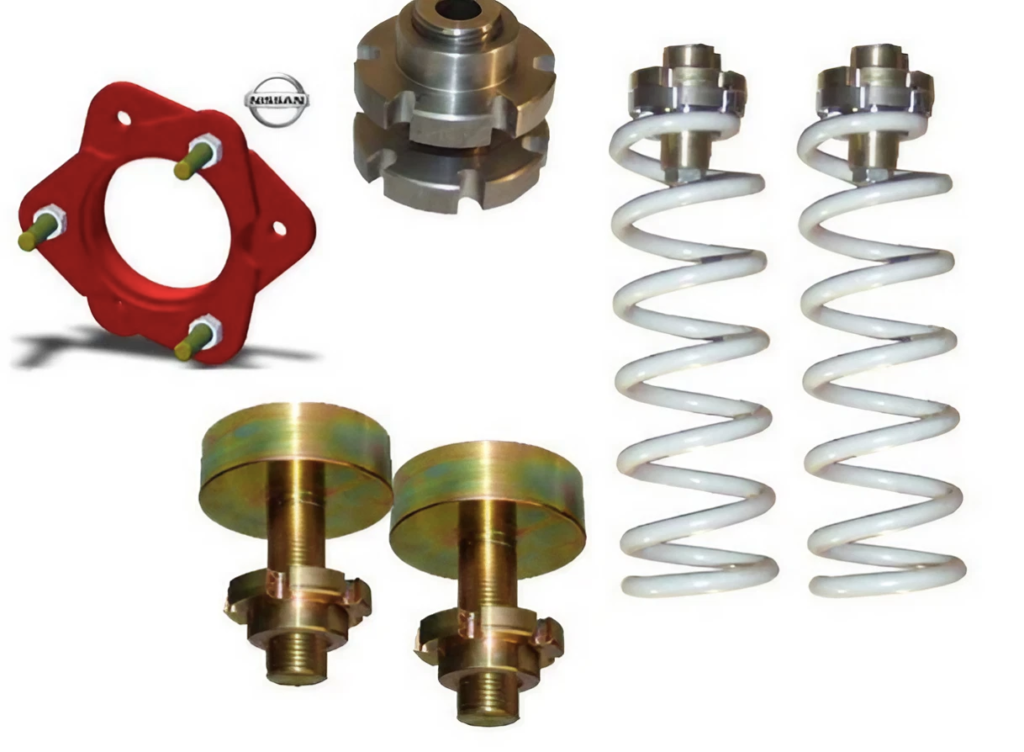Leveling kits have become increasingly popular among automotive enthusiasts. They enhance the appearance and performance of vehicles.
These kits are designed to level out the stance of your vehicle by raising the front end to match the height of the rear.
While leveling kits offer a range of benefits, such as improved aesthetics and increased ground clearance, it's essential to understand their impact on suspension sag and ride height consistency.
In this article, we'll explore how leveling kits affect suspension sag and ride height consistency, and what you need to know to make an informed decision when considering a leveling kit for your vehicle.
Understanding Suspension Sag
Before we dive into the impact of leveling kits on suspension sag, let's first understand what suspension sag is and why it matters. Suspension sag refers to the amount of compression in your vehicle's suspension when it is at rest. The compression occurs due to the weight of the vehicle pressing down on the springs and shocks.
Every vehicle has a factory-designed amount of suspension sag, which is carefully calculated to provide the optimal balance between ride comfort, handling, and load-carrying capacity.
The amount of sag can vary depending on the vehicle's make, model, and intended use.
The Importance of Proper Suspension Sag
Maintaining the proper amount of suspension sag is crucial for several reasons. First and foremost, it ensures that your vehicle's suspension is working as intended, providing the necessary support and damping to keep your ride smooth and stable.
When the sag is too little or too much, it can lead to a range of issues, such as:
- Poor ride quality
- Reduced handling and stability
- Uneven tire wear
- Increased stress on suspension components
- Reduced ground clearance
How Leveling Kits Affect Suspension Sag
Leveling kits are designed to raise the front end of your vehicle to match the height of the rear, effectively leveling out the stance.
While raising the front end of your vehicle can provide a more aggressive and balanced appearance, it's important to consider how leveling kits can impact suspension sag.
When you install a leveling kit, you are essentially altering the factory-designed suspension geometry. By raising the front end, you are changing the angle at which the springs and shocks operate, which can affect the amount of suspension sag.
Increased Suspension Sag
One consequence of installing a leveling kit is increased suspension sag. Raising the front end increases the distance between the axle and frame, compressing the springs more than designed.
Increased suspension sag can lead to reduced ride quality, increased body roll, and accelerated wear on suspension components. In some cases, the increased sag can cause the suspension to bottom out, especially on rough terrain or when carrying heavy loads.
Inconsistent Ride Height

Another issue with leveling kits is inconsistent ride height. Installing a leveling kit raises the front end to match the rear. However, this doesn't ensure consistent ride height over time.
As suspension components wear and settle, ride height can sag, leading to an uneven stance. This is particularly noticeable with a heavy front end, like a diesel engine or winch bumper.
Choosing the Right Leveling Kit
To minimize the impact of leveling kits on suspension sag and ride height consistency, it's essential to choose the right kit for your vehicle. There are several factors to consider when selecting a leveling kit, including:
Quality and Design
When it comes to leveling kits, quality and design matter. Look for kits that are engineered specifically for your vehicle's make and model, and that use high-quality materials and construction techniques. Avoid cheap, generic kits that may not provide the necessary support and durability.
Adjustability
Some leveling kits offer adjustable ride height, which can be a valuable feature for fine-tuning your suspension setup. Adjustable kits allow you to dial in the perfect ride height for your specific needs, whether you're looking for maximum ground clearance or a more comfortable ride.
Compatibility with Other Suspension Components
When installing a leveling kit, consider its interaction with other suspension components like shocks, struts, and control arms. Choose kits designed to work seamlessly with your vehicle's existing suspension components and avoid those requiring extensive modifications or custom fabrication.
Also see: ADD LINK HERE
Proper Installation and Setup
Even the best leveling kit can cause issues with suspension sag and ride height consistency if it is not installed and set up properly. To ensure the best possible performance and longevity from your leveling kit, it's essential to follow these guidelines:
Follow the Manufacturer's Instructions
When installing a leveling kit, always follow the manufacturer's instructions carefully. These instructions are designed to ensure proper fitment and performance, and deviating from them can lead to issues down the road.
Use the Right Tools and Techniques
Installing a leveling kit requires the use of specific tools and techniques. Make sure you have the necessary equipment, such as a jack, jack stands, and a torque wrench, and that you know how to use them properly. If you're not confident in your ability to install the kit yourself, consider having it done by a professional.
Regularly Inspect and Maintain Your Suspension
After installing a leveling kit, it's essential to inspect and maintain your suspension components regularly. Look for signs of wear or damage, such as cracked bushings or leaking shocks, and address any issues promptly.
Regular maintenance can help extend the life of your suspension components and ensure consistent performance over time.
Also see: Coil Adjusters: Fine-Tuning Your Leveling Kit for Optimal Ride Height
Conclusion: Leveling Kits and Suspension Performance
In conclusion, leveling kits significantly impact suspension sag and ride height consistency. These kits offer benefits like improved aesthetics and increased ground clearance. However, it's crucial to understand their potential drawbacks and how to mitigate them.
Choose the fitting leveling kit for your vehicle, follow proper installation and setup procedures, and regularly inspect and maintain your suspension components. This way, you can enjoy a leveled stance without compromising your vehicle's suspension performance.

